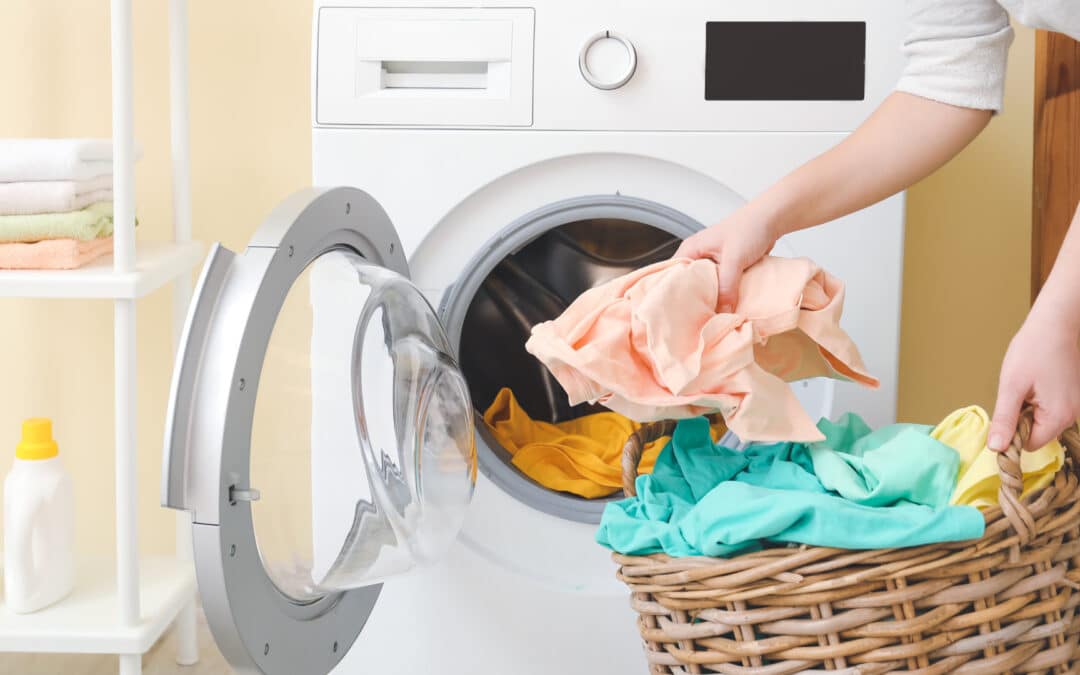If you want to make sure your clothes are always fresh and clean, then you need to take the time to clean your washing machine. Not only will it help your clothes come out cleaner, but it will also help extend the life of your machine.
This blog post will provide you with step-by-step laundry cleaning instructions that will make your life easier with house cleaning. You’ll learn about the different cleaning methods, the best products to use. And the precautions you should take before and after cleaning your washing machine. So let’s get started and make your life easier by keeping your washing machine clean!
How Often Should You Clean Your Washing Machine?
Taking the first step is easy: Get familiar with the handbook that came with your device. If your washing machine has a self-clean cycle, the manufacturer will likely specify how often you should run it. If not, you can use whatever rule of thumb is specified by the manufacturer.
Don’t worry if your owner’s handbook isn’t very helpful; we’re here to fill up the gaps. As a first step, schedule a monthly washing machine cleaning. If you often run loads with a lot of dirt, it might be a good idea to clean it more often. Especially if you notice less clean clothes or less efficient washing. (Some warning signs include stain resistance, foul smells, unusually long cycle duration, and residue on the drum after a load.)
Always remember to leave your washing machine door open for at least 12 hours after each wash. To allow the drum area and gasket to dry naturally, preventing mold growth inside the gasket lining.
What Supplies Do You Need To Clean Your Laundry?
There are a lot of items on the market that claim to clean your washing machines. Such as wipes and detergents, and although they may be helpful, the compounds they use are unpleasant for the environment.
Since bleach is considered a pesticide under the Federal Hazardous Substances Act, it is strongly advised that you do not use it to disinfect your washing machine. It’s a carcinogen, an asthma gene, and a skin and lung irritant. Worse, it’s responsible for more accidental poisonings in the home than any other substance. Eventually, what should you use to disinfect your washer? As it turns out, all you need is some white distilled vinegar to get everything clean without harming the environment.
If you live in a region with hard water, vinegar can help descale your washing machine. Also decrease mineral deposits from harsh water, protecting your garments and extending their lifespan.
Keep in mind that whatever you put into your washing machine eventually ends up in the water supply. So try to use as few chemicals as possible per load. Starting with an all-natural detergent is a good first step, and then you may consider making the jump to a product with fewer chemicals and additives.
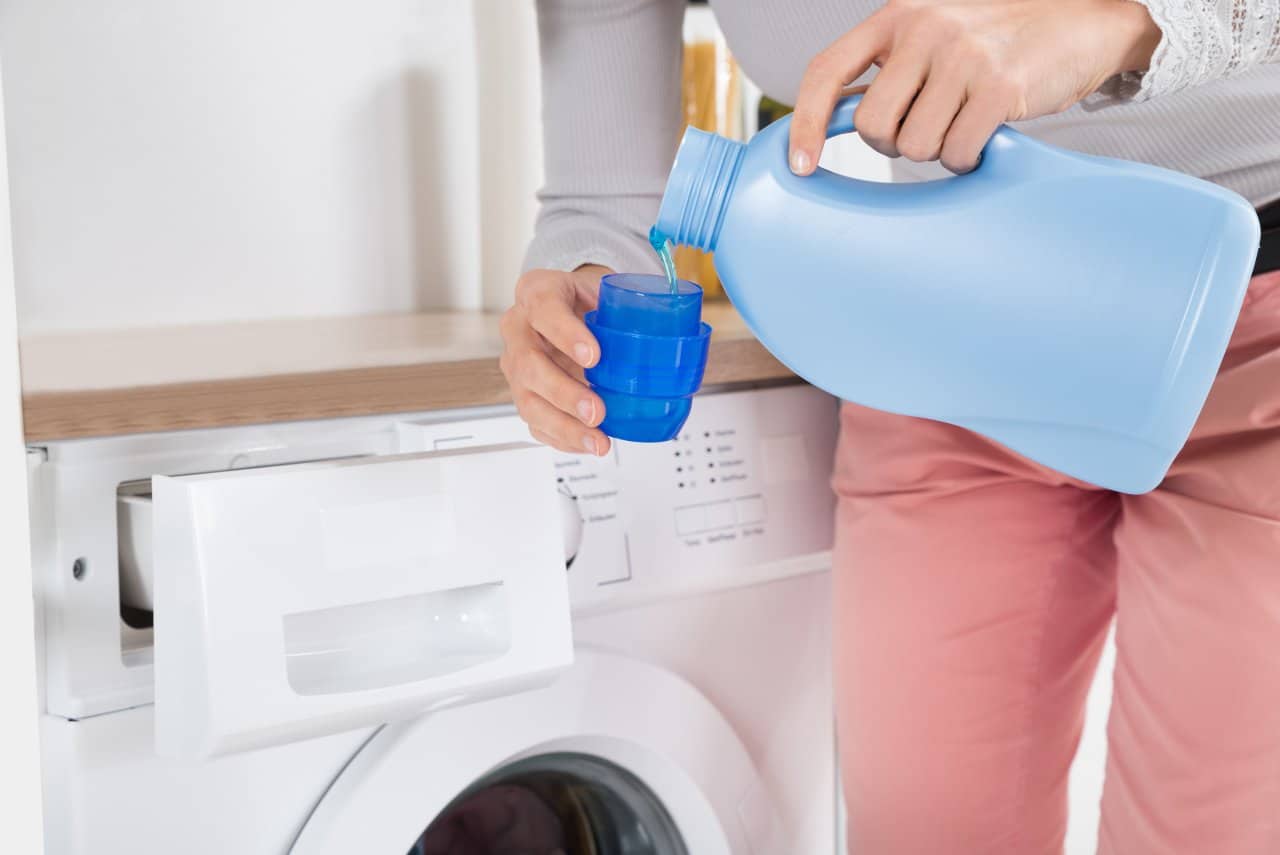
How to Clean Your Laundry
If your washing machine has a self-clean cycle, use it and follow the instructions to clean the inside. If not, you can use this simple guide to laundry cleaning step-by-step to get rid of buildup in the hoses and pipes of your washing machine and keep your clothes fresh and clean.
Use Vinegar in a High Heat Cycle
If you don’t have any other laundry detergent, you can substitute two cups of white vinegar for the detergent and run the load through the usual hot cycle. Put the vinegar in the laundry detergent bottle. (You need not fear for the safety of your washing machine; white vinegar does not harm clothing.) When combined, hot water and vinegar kill bacteria and limit their growth. Vinegar can also be used as a deodorizer, effectively neutralizing musty or moldy scents.
Do a Second Wash and Spin
You should run an additional rinse and spin after the wash cycle is finished to remove any remaining bleach or particles.
Clean the Washer Inside Out
Combine a quarter cup of vinegar with one quart of warm water in a bucket or adjacent sink. To clean the inner workings of the machine, combine the ingredients and use a sponge and a special toothbrush. Check the inside of the door and the area around the door frame. As well as any fabric softener or soap dispensers. Soak the soap dispenser in vinegar water before cleaning it if it is detachable. Additionally, you should clean the machine’s exterior.
Wipe the Washer Door
Take out any items or clothes from the washer. Get a moist towel and clean the inside of the washer’s glass or metal housing by opening the door or lid. Clean the rubber seal on the outside of front-loading washing machines by wiping it down. Once you’ve finished wiping the exterior, lift the rim and repeat the process inside.
Conduct a Second Hot Cycle
Keep going with the standard hot cycle, but this time leave out the detergent and vinegar. You can add half a cup of baking soda to the drum after the first cycle if you’d want to get rid of any stubborn residue that becomes loose. The drum should be cleaned with a microfiber cloth when the cycle is finished. This will eliminate any residue that may have been left behind.
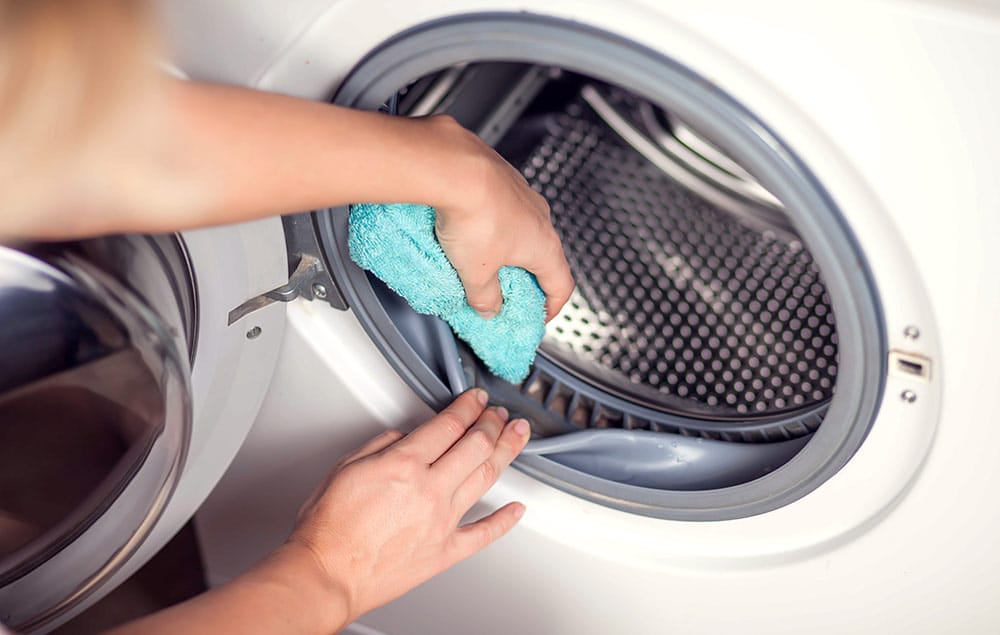
Steps to Clean a Top-Load Washer
Follow this guide to clean the inaccessible areas of a top-load laundry cleaning step-by-step.
Let it Soak
We recommend pausing the top-loading washer during the first hot-water cycle described above to clean the machine thoroughly. First, let the tub fill and agitate for a minute, and then stop the cycle for an hour to soak the vinegar.
Spot-Cleaning for Unreachable Areas
Scrub the inside of the lid and the area under the tub’s rim with a toothbrush.
Brush Away the Dust and Spruce up the Exterior
Furthermore, top-loading washers are notorious for amassing more dust than their front-loaning counterparts. White vinegar on a microfiber cloth can be used to clean the machine’s top and control dust and detergent residue.
Steps to Clean a Front-Load Washer
Front-loading washers typically include a gasket or rubber seal around the door that has to be cleaned if your clothes have a musty odor after washing. Mold and mildew can flourish in an environment with standing water and detergent, so keeping this area clean is essential.
Clean the Gasket
Door dirt can be removed by spraying the area with distilled white vinegar. And letting it soak for at least a minute with the door propped open.
Avoid Mildew and Mold Growth
A diluted bleach solution can be used as an additional step for cleaning your laundry. Keep the door open for a while after each wash to let the dampness dry out and stop the growth of mold and mildew.
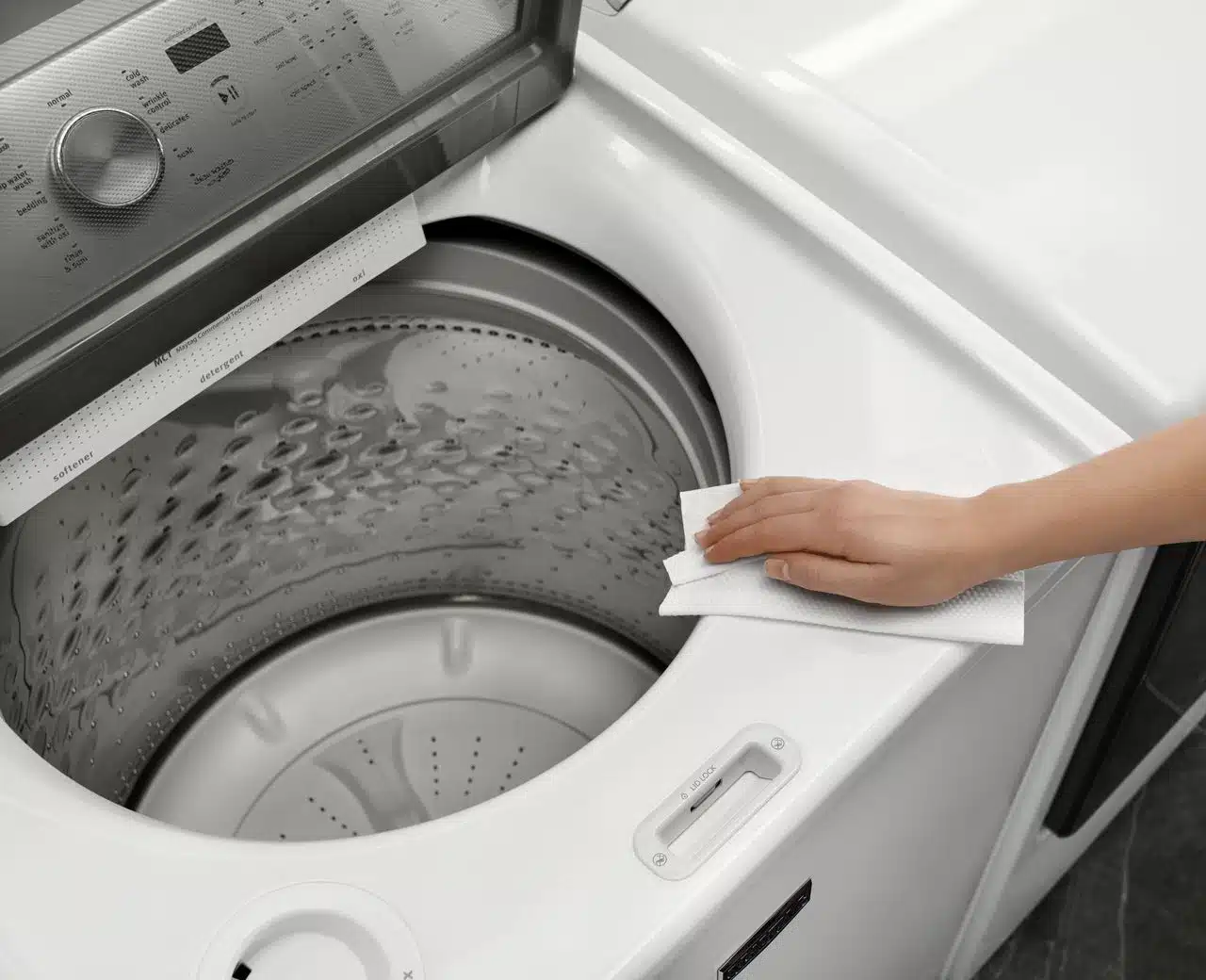
How to Prevent a Smelly Washing Machine
In addition to deep cleaning your laundry once a month, you should also make it a habit to leave the machine door open or the lid up after each usage. This allows air to flow and dry out any lingering moisture that can contribute to musty aromas. If your system has a child lock, use it to prevent curious kids and dogs from playing with the controls.
Remove Clean Laundry Immediately
It’s important to unload the washing machine after each cycle ends to avoid the development of a musty smell.
Get rid of the dust and the pet hair
After numerous washes, your washing machine will be full of pet hair if you have a pet that sheds inside the house. Leave the door open until the pet hair and drum are dry. The next step is to vacuum the fur using the gentle brush attachment.
Dry the gasket
To prevent mold growth, wipe out the gasket of your front-loading washing machine with a towel after each use and examine it for little things like baby socks.
Clean the controls and dispenser
If you observe any detergent or softener dripping from the machine’s front, sides, or dispenser, use a moist cloth. Wipe down these areas as well as the controls and door handle. Get rid of them as soon as you see them since they are easier to get rid of when they are still moist. This will prevent the growth of mold and germs in your washer and keep it looking great for a long time.
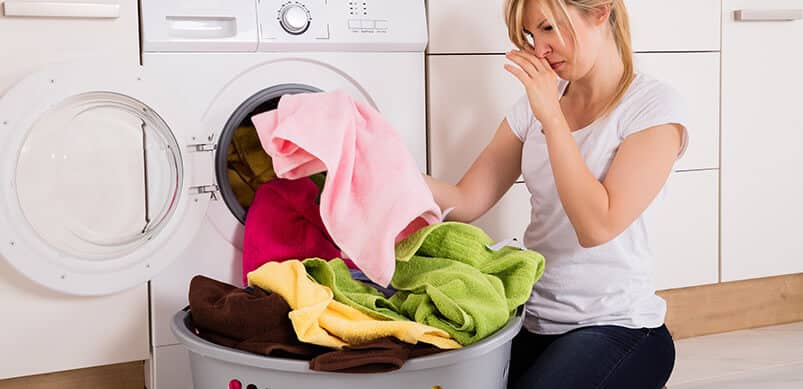
Gasket and Detergent Drawer Cleaning for Front-Load Washing Machines
If they aren’t kept clean and maintained, these two places can quickly become a breeding ground for germs, mold, and other unpleasantness. Both are simple to maintain and will significantly increase your machine’s longevity if cared for regularly. We recommend the following actions be taken if you discover accumulation or mold growth:
Cleaning the Front Load Gasket
- Get the gasket back and pull it back.
- Use a plant-based cleaner.
- Don’t touch it for a few minutes.
- Scrub the sprayed area under the gasket with hot water and a microfiber cloth or scouring brush.
- The final cleaning should be done with a damp or dry microfiber cloth.
- After spraying distilled white vinegar over the drum and seal, waiting 5 minutes, scrubbing, and wiping with a damp microfiber cloth, you should be good to go. The same steps should be taken with 3% hydrogen peroxide. All of this should be done again until the mold problem has been resolved.
Cleaning the Front Load Drawer
- You need to take out the entire drawer of soap.
- Remove any debris from the gap with a microfiber cloth sprayed with an All Purpose Cleaner (or another plant-based cleaner).
- To clean the drawer, use your preferred plant-based cleanser and spray it inside.
- Get rid of the grime with a used toothbrush or scrub brush.
- Use lukewarm water to wash and rinse.
- Leave no moisture in the gap or the drawer.
- Put the drawer back into the dryer.
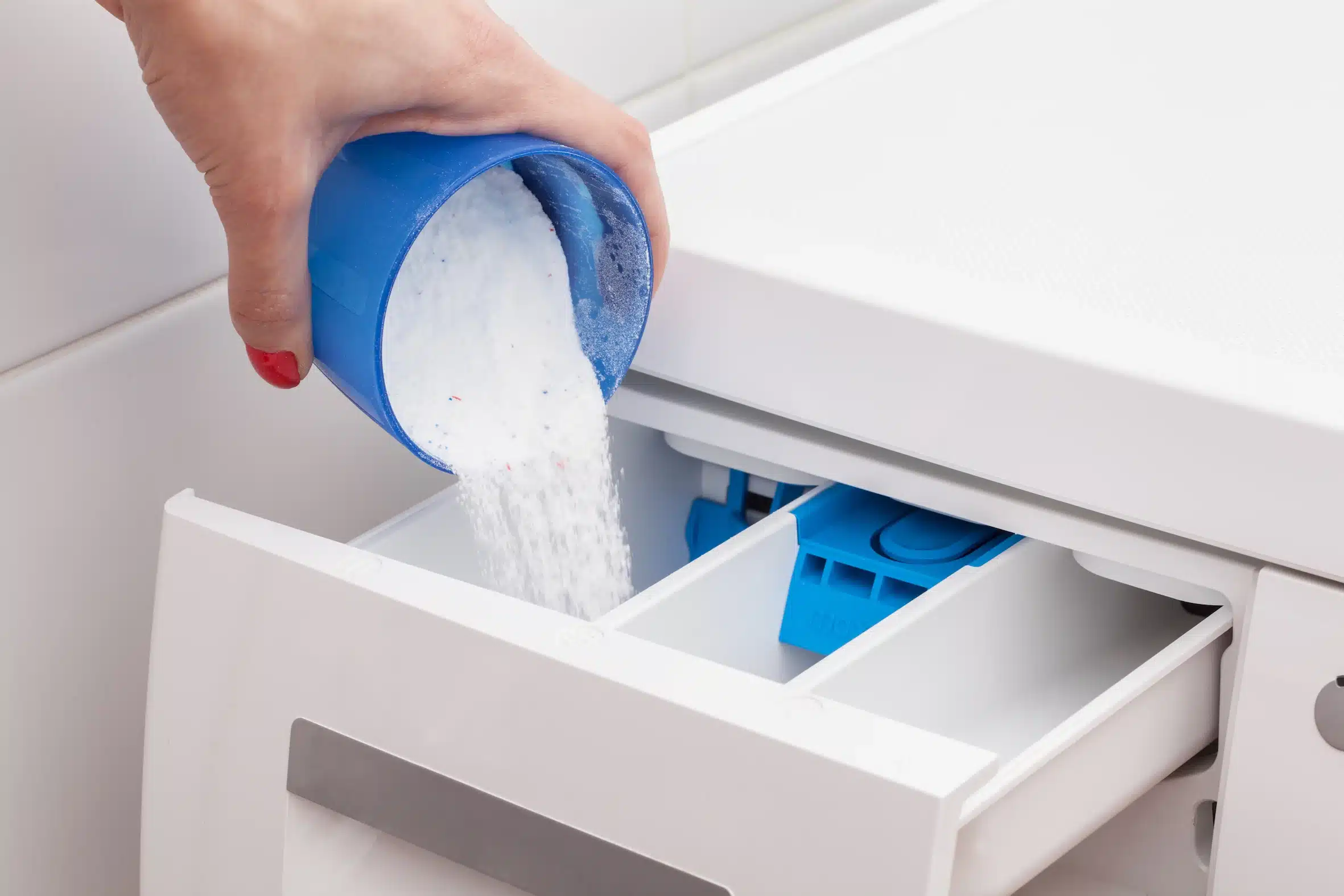
Can The Use Of Vinegar In A Washing Machine Cause Any Harm?
Vinegar can be used in the washer without risk, but only if used sparingly. If you use vinegar frequently, you risk ruining your rubber washer hoses, gaskets, and seals, especially if you have a front-loading model. That being said, you shouldn’t use vinegar on your machine too often (or use vinegar in your laundry cycle).
Use only distilled white vinegar (as opposed to normal white vinegar) due to its lower acetic acid content if you decide to go this route.
Why Does My Washing Machine Have A Bad Odor?
Bad odors can develop in either a top- or front-loading machine if dirt, soap scum, and other debris are allowed to accumulate in the seals, nooks, and crannies of the appliance. It is especially important to replace the door gasket on front-loading machines, which often serves as a breeding ground for unpleasant odors.
Make sure you’re using the right kind of detergent for your washing machine, and don’t use more than the suggested amount to get rid of the odor. Soap scum is a breeding ground for bacteria and can encourage the accumulation of further grime after washing.
Laundry Cleaning DON’TS
Unfortunately, we’ve all made the mistake of trying to run an empty, hot cycle with an excessive amount of detergent. If the detergent foams up too much inside the drum, water will begin to leak out of the machine through the tray section, flooding your kitchen. What’s the fix?
When operating a service wash, you shouldn’t use liquid detergent or even the best washing pods, and if you must use powder detergent, use very little. Using a washing machine cleanser or even just a small quantity of bleach is preferable to using conventional detergent.

Leave it to the Pros!
Overall, these step-by-step laundry cleaning instructions are simple and won’t take up too much of your time, but they will make a huge difference in the durability and performance of your washing machine. Washing machines are an expensive investment that can be easily protected by keeping them clean.
But let’s face it, it’s difficult to find the time to fit an elaborate laundry cleaning process into your annual spring cleaning schedule. My Cleaning Angel can help take this stressful chore away from you and provide exceptional laundry cleaning services at your doorstep!
Schedule cleaning services online has never been easier. You can get an instant quote and book a house cleaning online.

